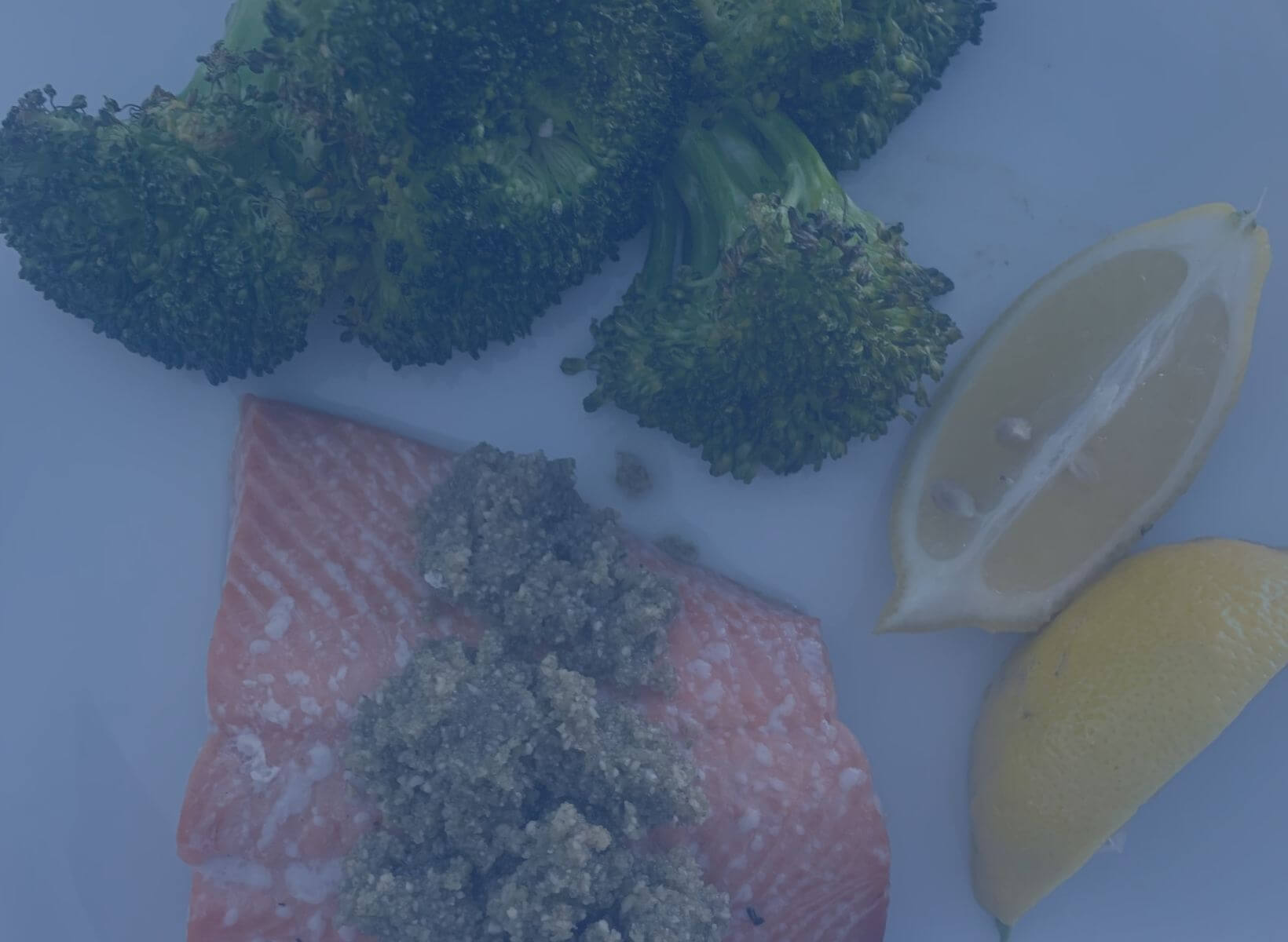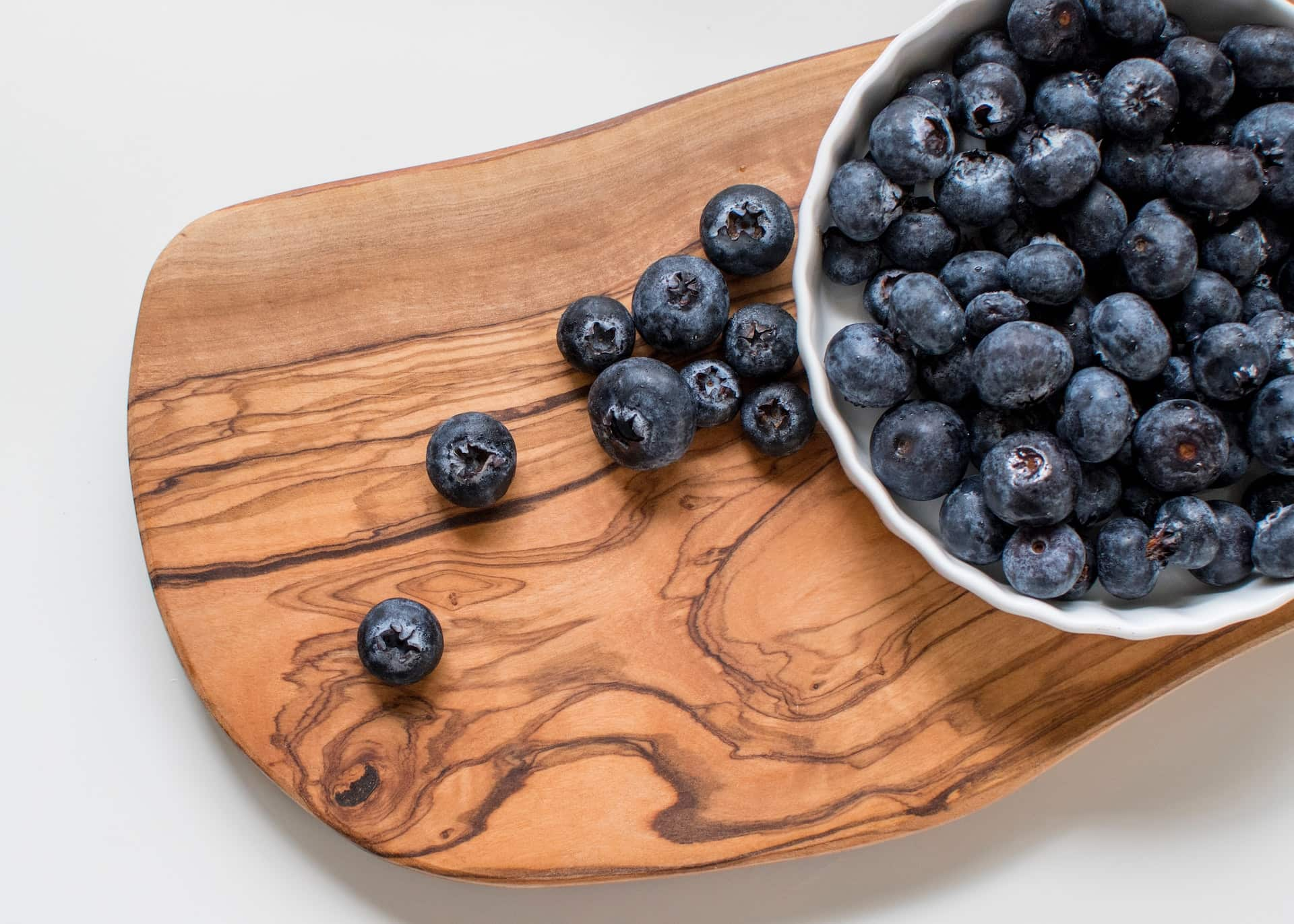Salmon is simple to prepare and works with just about any flavor or cuisine. From a teriyaki glaze to honey mustard dressing or a simple classic lemon dill seasoning, salmon picks up, blends, and compliments the flavors it is cooked with.
It is also one of the healthiest types of seafood available. It’s packed with healthy fats, vitamins, and minerals that support your metabolic health.
In this article, you’ll learn:
- the different types of salmon commonly available
- the benefits of each
- why salmon is such a good choice for metabolic health.
We’ll also look at some easy ways to add salmon to your meals and finish up with a luscious salmon cake salad. A perfect way to end a busy day any time of the year.
Why Is Salmon a Good Choice for Metabolic Health?
Seafood of all types contains nutrients that help support your metabolic health. Rich in lean protein, most fatty seafood like salmon also contains vitamin D, omega-3 fatty acids, and antioxidants selenium and B vitamins.
Salmon has one of the highest omega-3 levels of all seafood and is one of the richest natural food sources of vitamin D available.
DHA and EPA omega-3 fatty acids found in salmon have been linked to a reduced risk of heart disease, brain health, and reduced risk of high blood pressure.2
The Dietary Guidelines for Americans recommend that all Americans eat at least 2 servings of seafood a week and aim for 250mg of DHA/EPA a day.3Unfortunately, most of us fall well below that, with only 20 percent of Americans eating the recommended amount.4
A number of studies have looked at the relationship between fatty fish intake and weight loss. Seafood intake, especially fatty seafood like salmon resulted in significant weight loss when it replaces other proteins or carbohydrate-based foods.5
Additionally, early research has shown improvements in insulin sensitivity and reduced levels of C-reactive protein (a marker of inflammation and indicator of risk for coronary heart disease) in those with higher seafood intakes.6
When you skip the seafood, you increase your risk of poor cardiometabolic health. , A large study in the Journal of the American Medical Association in 2017, identified dietary risk factors leading to cardiometabolic risk and death. Low seafood intake was one of the top 5 dietary causes of cardiometabolic death. The researchers estimated that over 54,000 deaths occurred in one year because of a low intake of omega-3-containing seafood.7
So, you can see why adding salmon to your meals can help support metabolic health.
<p class="pro-tip"><strong>Learn more about </strong> <a href="/blog/omega-3-fish-oil-weight-loss">taking omega-3 supplements for weight loss</a>.</p>
What’s the Difference Between Farm-Raised Salmon and Wild-Caught?
There are many types of salmon available, between the fresh fish counter, frozen seafood aisle, and even the canned seafood section in the store. It can be confusing to know what the difference is and if one is better than the other.
Let’s start with the question in many people’s minds. What is the difference between farm-raised salmon and wild-caught salmon? Is one better than the other?
Farm-Raised Salmon
When you see “Atlantic Salmon” on the label or sign at the fish counter it most likely means that the salmon is farm-raised. There is very little wild salmon caught in the Atlantic ocean.
Farm-raised salmon means the salmon is raised either on a farm located in the ocean or on land in large tanks and pens. Over half the seafood consumed in the world is farmed raised and salmon is one of the most common types of farmed seafood available. Being farm-raised, t is available fresh throughout the year.8
Farmed salmon is a safe and healthy seafood option. Recent research comparing farmed salmon to wild-caught has shown lower levels of heavy metals, dioxins, and PCBs in farm-raised salmon, with both falling well below maximum safety thresholds.9
The same study found higher levels of omega-3 fatty acids in farm-raised fish versus wild-caught.
Farm-raised seafood is one way to help feed our growing population. According to the National Oceanic and Atmospheric Administration (NOAA), U.S. laws regulating farm-raised seafood are some of the strictest in the world.8
The Aquaculture Stewardship Council (ASC) has a certification program for fish farmers. They focus on making sure the fisheries follow sustainable environmental practices. You can look for the ASC-certified logo at your seafood counter.
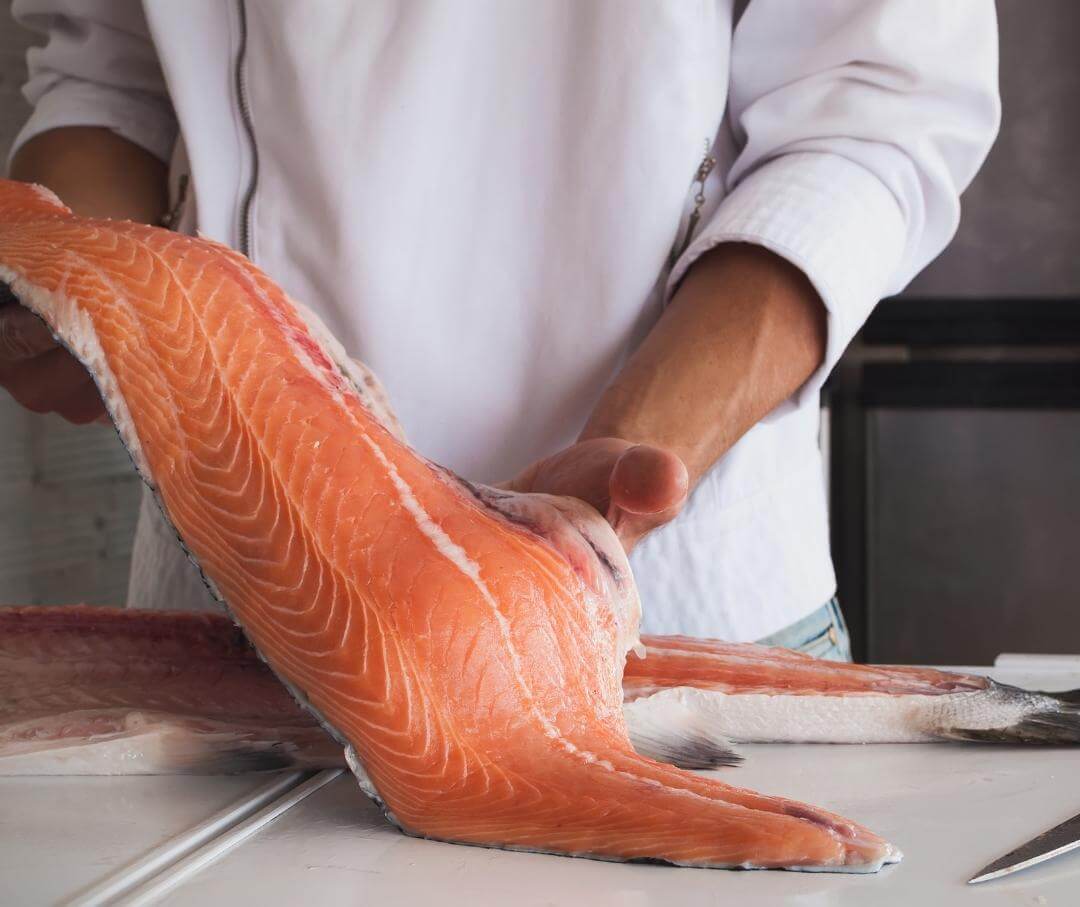
Wild Salmon
There are many species of wild salmon but the most common found in U.S. grocery stores are Sockeye, Chinook, Coho, and Pink Salmon.10
Pink, Sockeye, and Coho salmon are the most common type of wild salmon available. Salmon season runs between April and September, so you will probably find a wider variety available during these months.
Sockeye and Coho salmon vary in color and flavor. Sockeye is a darker pink to red color with a rich flavor while coho is lighter in both color and flavor.
Chinook salmon, otherwise known as “king” salmon is by far the best quality salmon, but is not commonly found in most local grocery stores. You may be able to find it in late spring/early summer at specialty fish shops or higher-end grocery stores. Know that the higher the quality, the higher the price. King salmon can range from $30 to $70 per pound!
Pink salmon is the most common of all wild salmon caught. It is the type most frequently found in canned or pouched shelf-stable salmon products.
Fun fact, pink salmon isn’t really pink in color! After cooking the meat tends to be a light pink to beige color. It also has a pretty mild flavor so many people prefer it over the other types of salmon.
If you’re looking for sustainably caught salmon (which is recommended!), most retailers have sustainability programs and only buy from certified suppliers. A good way to know if the salmon is sustainably sourced is to look for the Marine Stewardship Council’s logo.
{{mid-cta}}
Benefits of Salmon for Dinner
Salmon is an easy fish to prepare at home. Because it is firm and meaty, it is pretty forgiving and an easy fish for most home cooks to prepare. You can bake it, roast or grill it or even pan-fry or air-fry it.
While salmon has a stronger flavor, it still picks up other flavors nicely. Try marinating it in a citrus marinade, grill it with a soy sauce or teriyaki glaze or add some pesto on top. You can make burgers using fresh or canned salmon or even toss it into a pasta primavera or add it to tacos.
Leftover cooked salmon is also perfect on top of a salad or added to a grain bowl for lunch. There are a million ways to prepare salmon, so you will never get tired of it. Here is an easy dinner salad recipe that you can put together in under 15 minutes.
Salmon Cake Salad
Using mostly pantry staples, this salad is perfect for a night when you don’t have much time (or just don’t feel like cooking). Add some extra crunch by topping it with toasted almonds or hazelnuts and serve with a whole grain roll on the side.
Ingredients:
- 2, 5 oz. cans boneless, skinless pink salmon, drained
- ¼ cup diced sweet onion
- 1 egg, beaten
- ¼ cup crumbled feta cheese
- ¼ cup diced roasted red pepper
- 1 tsp. dried basil
- ½ tsp. dried oregano
- ¼ cup bread crumbs
- 1 tsp. grapeseed oil
- 4 cups mixed lettuce greens
- Sliced cucumber and radish (or other vegetable you prefer)
Directions:
- Place salmon, onions, egg, feta, red pepper, basil, oregano and bread crumbs in a medium bowl. Mix gently to combine all ingredients well.
- Using a ⅓ cup measuring cup, form into 4 equal patties.
- Place grapeseed oil in a medium non-stick skillet and heat over medium heat. When the oil is hot, place patties in the pan and cook for about 2 minutes on each side, turning over carefully.
- Divide lettuce greens and vegetables between 2 plates. Top with 2 salmon patties. Drizzle with dressing.
Nutritional Information:
Calories: 310, Fat: 11g, Saturated Fat: 4.5g, Carbohydrates: 18g, Fiber: 2g, Sugars:7g, Protein: 34g, Vitamin D: 9mcg, Calcium: 175mg, Iron: 3mg, Potassium: 780mg
<p class="pro-tip"><strong>Find more </strong> <a href="/blog-category/recipes">healthy recipes to stabilize blood sugar</a>.</p>
- Item 1
- Item 2
- item 3
Topics discussed in this article:
References
- United States Environmental Protection Agency. (2021). EPA-FDA Advice about Eating Fish and Shellfish For Those Who Might Become Pregnant, Are Pregnant, Are Breastfeeding, and for Children. Retrieved August 29, 2022, from: https://www.epa.gov/fish-tech/epa-fda-advice-about-eating-fish-and-shellfish
- Rimm, E. B., Appel, L. J., Chiuve, S. E., Djoussé, L., Engler, M. B., Kris-Etherton, P. M., Mozaffarian, D., Siscovick, D. S., Lichtenstein, A. H., & American Heart Association Nutrition Committee of the Council on Lifestyle and Cardiometabolic Health; Council on Epidemiology and Prevention; Council on Cardiovascular Disease in the Young; Council on Cardiovascular and Stroke Nursing; and Council on Clinical Cardiology (2018). Seafood Long-Chain n-3 Polyunsaturated Fatty Acids and Cardiovascular Disease: A Science Advisory From the American Heart Association. Circulation, 138(1), e35–e47. https://doi.org/10.1161/CIR.0000000000000574
- United States Department of Agriculture, Health & Human Services. Dietary Guidelines for Americans, 2020-2025. Retrieved August 29, 2022, from: https://www.dietaryguidelines.gov/sites/default/files/2020-12/Dietary_Guidelines_for_Americans_2020-2025.pdf
- Terry, A.L., Herrick, K.A., Afful, J., Ahluwalia, N. (2018). Seafood consumption in the United States, 2013–2016. NCHS Data Brief, no 321. Hyattsville, MD: National Center for Health Statistics. Retrieved August 29, 2022, from: https://www.cdc.gov/nchs/products/databriefs/db321.htm
- Smith, J. D., Hou, T., Ludwig, D. S., Rimm, E. B., Willett, W., Hu, F. B., & Mozaffarian, D. (2015). Changes in intake of protein foods, carbohydrate amount and quality, and long-term weight change: results from 3 prospective cohorts. The American journal of clinical nutrition, 101(6), 1216–1224. https://doi.org/10.3945/ajcn.114.100867
- Liaset, B., Øyen, J., Jacques, H., Kristiansen, K., & Madsen, L. (2019). Seafood intake and the development of obesity, insulin resistance and type 2 diabetes. Nutrition research reviews, 32(1), 146–167. https://doi.org/10.1017/S0954422418000240
- Micha, R., Peñalvo, J. L., Cudhea, F., Imamura, F., Rehm, C. D., & Mozaffarian, D. (2017). Association Between Dietary Factors and Mortality From Heart Disease, Stroke, and Type 2 Diabetes in the United States. JAMA, 317(9), 912–924. https://doi.org/10.1001/jama.2017.0947
- Understanding Marine Aquaculture (n.d.) National Oceanic and Atmospheric Administration, U.S. Department of Commerce. Retrieved August 29, 2022, from: https://www.fisheries.noaa.gov/insight/understanding-marine-aquaculture
- Jensen, I. J., Eilertsen, K. E., Otnæs, C., Mæhre, H. K., & Elvevoll, E. O. (2020). An Update on the Content of Fatty Acids, Dioxins, PCBs and Heavy Metals in Farmed, Escaped and Wild Atlantic Salmon (Salmo salar L.) in Norway. Foods (Basel, Switzerland), 9(12), 1901. https://doi.org/10.3390/foods9121901
- Watson, M. (2020). Top 6 Types of Salmon. The Spruce Eats. Retrieved August 29, 2022, from: https://www.thespruceeats.com/types-of-salmon-4098993

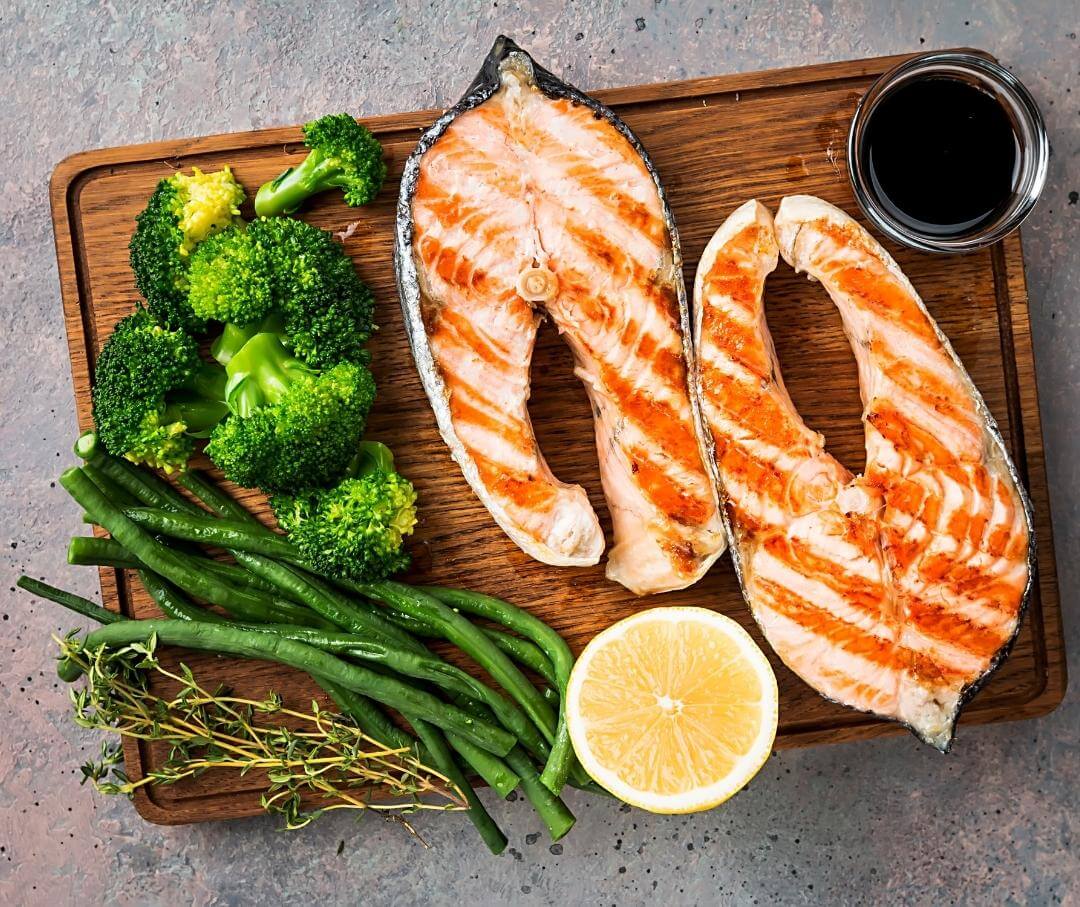
.jpg)




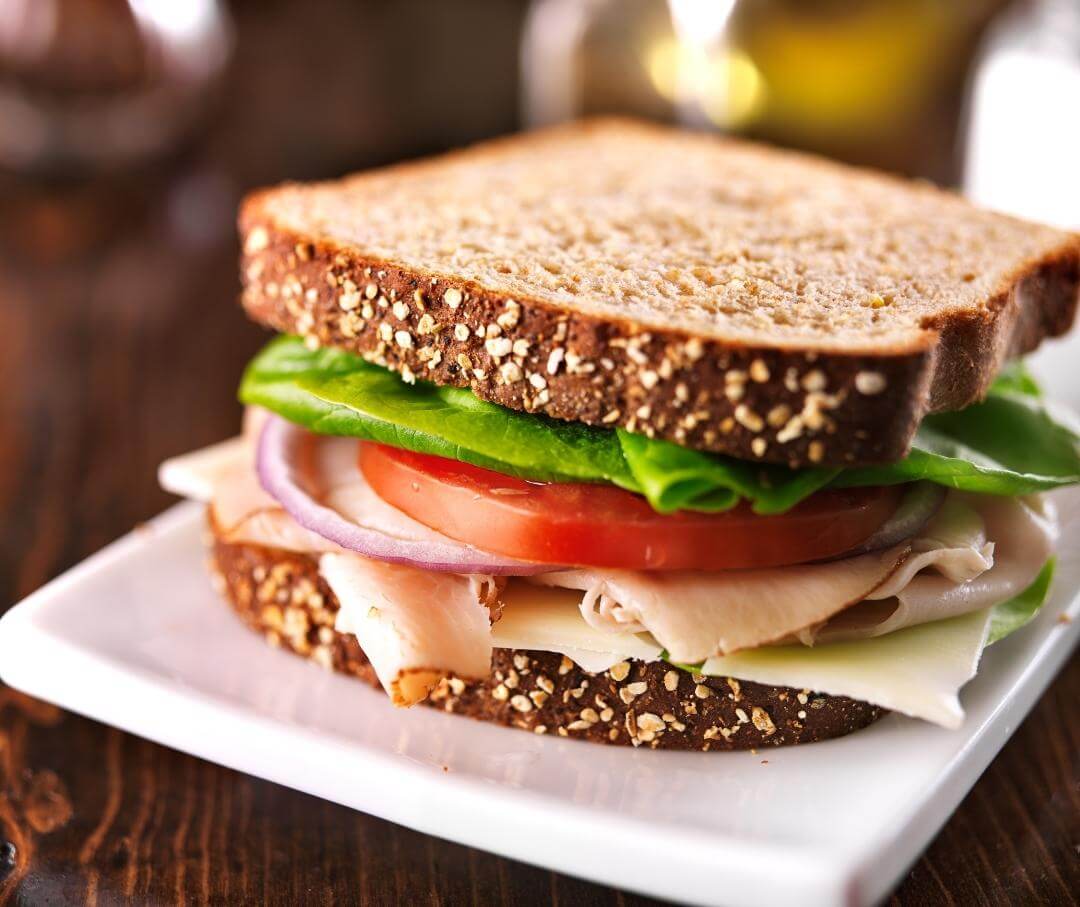
.jpg)
